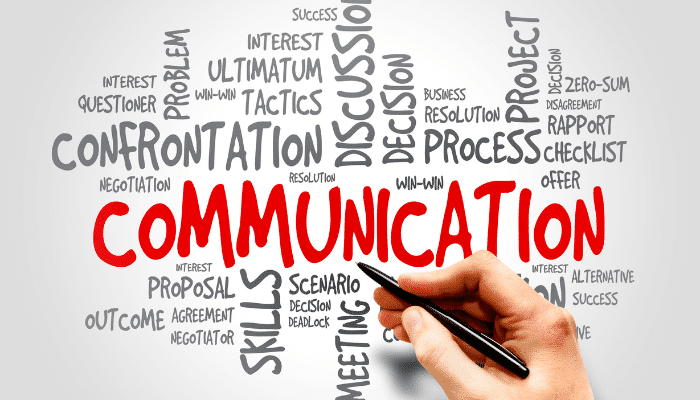Technological advancements in an increasingly globalized world have led to more diverse workplaces. People can communicate over the Internet and manage teams and companies without meeting in person.
Since the pandemic, remote work has become more common across different industries. In the United States, around 22 million people work from home full-time, with similar trends observed globally. Due to improvements in connectivity, people can work from any geographical location.
Consequently, many companies and organizations have teams from different places and cultural backgrounds. This diversity can make for an enriching, stimulating work environment. However, without good communication, these differences can also cause specific problems.
Keep reading to understand the importance of intercultural communication and how companies can overcome the communication challenges of a diverse workplace.
Understanding Intercultural Communication
Intercultural communication refers to communication between different cultural groups. The term “culture” can cover a wide breadth of characteristics and practices. One’s cultural background can include class, education, religion, ethnicity, and other differentiating aspects.
Additionally, one’s culture can have an extensive effect on their life. It can affect their communication style, approach to work, and how they show respect.
For example, some cultures are looser with honorifics, meaning employees might call their managers by their first name. Others, however, might be used to hierarchies and have strict rules on addressing people in different positions.
A multicultural workplace brings a wealth of perspectives to the table. The diverse viewpoints can help teams develop creative solutions that benefit the company.
However, some cultural differences could cause tensions within the workplace. For this reason, developing effective intercultural communication among employees is essential to maintain good working relationships.
Intercultural communication considers the differences between employees’ different cultural backgrounds. It helps educate employees and develop strategies to understand each other better.
Benefits of Effective Intercultural Communication in the Workplace
Effective communication is always necessary in the workplace. However, attention to communication habits is critical in a multicultural team, as issues might be more prevalent.
Let’s explore some of the key benefits of effective intercultural workplace communication.
1. Better teamwork
Intercultural communication helps foster better teamwork in any workplace. The more people understand each other’s work and communication styles, the better they can collaborate and work together to achieve common goals.
Improved intercultural communication can also minimize stereotyping, dampening interpersonal relationships and affecting teamwork.
Through effective intercultural communication, each person better understands where their colleagues come from. This understanding can help them tailor their actions and responses to best serve the team’s interests. When everyone has this approach, team projects can go more smoothly.
2. Productivity and proficiency
Improved intercultural communication helps reduce hangups and misunderstandings, increasing productivity and making training more effective.
If people can understand each other’s cultural perspectives, it can help minimize miscommunication and possible dissatisfaction. This benefit can cover different workplace processes, such as setting meetings, providing feedback, and developing company policies.
3. Improved leadership
Company leaders and managers should be at the forefront of implementing better communication practices in a multicultural workplace. The benefits of intercultural communication will also extend to their leadership.
Better understanding amongst team members helps leaders manage the team more effectively. Companies that train leaders in intercultural communication can cultivate a healthier work environment that increases employee engagement and satisfaction.
4. Global competitiveness
Many modern companies with diverse teams often adopt a more global perspective. Training employees to be sensitive to global perspectives can help a company’s growth when venturing into the international market.
Let’s say a company wishes to extend its operations to another country or region. Having a team that understands that region’s cultural nuances and preferences would reflect more positively on the company. Investors and the general public would likely become more receptive to their brand.
Challenges in Developing Effective Intercultural Communication
While a culturally diverse workplace has benefits, developing good communication among team members can be challenging. The different cultural backgrounds could present some issues that can hinder effective communication.
Here are some of the main issues companies might encounter when developing effective intercultural communication in the workplace.
1. Biases and stereotyping
Growing up in a specific place with its own culture can leave people with internal biases against people from other places or backgrounds. This trait can be particularly true if someone lives within a community with little diversity.
As a result, people can develop stereotypes about other people’s values, thoughts, and ways of thinking. While some may believe stereotypes can be harmless, applying them to everyday interactions could damage certain relationships.
2. Language barriers
Some consider English a universal language, which is valid to an extent. Many companies with multicultural staff often use English as a catch-all language for all communication. However, many people, especially in diverse workplaces, do not have English as a first language.
For this reason, some slang terms might not go over well with non-native speakers. It’s best to stick to traditional English in a professional setting and avoid using slang.
3. Communication styles
People can have different working cultures and communication styles, which can lead to miscommunication.
Some countries and cultures might emphasize the value of long working hours, while others are more lax and value taking breaks. Some cultures are more impersonal and prefer not to act friendly at work. Others are more personable, even in professional settings.
4. Customs and social norms
Depending on where you are in the world, the social norms in your area can affect expectations in the workplace.
Cultures that deeply value hierarchies and honorifics might be stricter and take offense at missteps in showing respect. Employees and bosses are not at the same level and must show deference even in their speech and body language.
Other cultures allow more casual interactions, even in the workplace. An example is people addressing one another by their first names, no matter the job title, or being more open and friendly with coworkers.
Tips for Developing Effective Intercultural Communication
Given the challenges of intercultural communication in the workplace, companies must actively develop strategies to overcome these barriers. Here are some tips companies can follow to aid communication in a diverse workplace environment.
1. Stay open-minded
Teams can easily resolve communication issues if everyone keeps an open mind. It’s likely that a coworker might say something that feels a little off.
Before responding negatively and possibly escalating the situation, take a step back and consider the person’s cultural background. Are they being aggressive or simply straightforward? Are they pushing your boundaries or being friendly?
Of course, it’s crucial to remain discerning. Prejudice and harassment aren’t cultural quirks. They are examples of harmful behavior that must be addressed.
2. Promote cultural understanding
When working in a shared environment, it’s likely that one culture might be more dominant than the others. While there’s nothing inherently wrong with this setup, it might unintentionally alienate employees who don’t belong to that specific culture.
Companies must ensure to celebrate and acknowledge aspects of the different cultures in their workplace. For example, you can educate the entire team on cultural practices and recognize holidays from various cultures. You can apply this arrangement to in-person or remote work setups.
3. Encourage face-to-face interactions
Face-to-face interactions are often lacking in remote working environments. As a result, employees heavily rely on direct messages and emails to communicate.
While these methods can effectively communicate work needs, they can be prone to miscommunication. They also aren’t as effective at building positive working relationships.
In-person meetings or video conferencing can help people bond with their teammates better. Putting faces to the names people interact with every workday can make people feel closer and more comfortable with each other. It can also encourage better communication and nurture relationships to help the team thrive.
Promote Workplace Diversity Through Effective Communication
Acknowledging and nurturing workplace diversity is an excellent way to create an engaging and healthy work environment.
Effective intercultural communication plays a crucial role in handling diverse workplaces. Not only does it make people feel included and understood, but it also helps people do their jobs better, significantly contributing to company growth.
Frequently Asked Questions
Q1. What is intercultural communication?
Ans. Intercultural communication is the exchange of information and ideas between people from different cultural backgrounds, encompassing verbal and non-verbal interactions to foster mutual understanding and respect.
Q2. How to improve intercultural communication for businesses?
Ans. To improve intercultural communication for businesses, promote cultural awareness, provide training, encourage open dialogue, respect differences, and adapt communication styles to create a more inclusive and effective working environment.
Q3. Why focus on improving intercultural communication?
Ans. Focusing on improving intercultural communication fosters understanding, reduces misunderstandings, enhances collaboration, and creates a more inclusive and harmonious environment in diverse settings.















